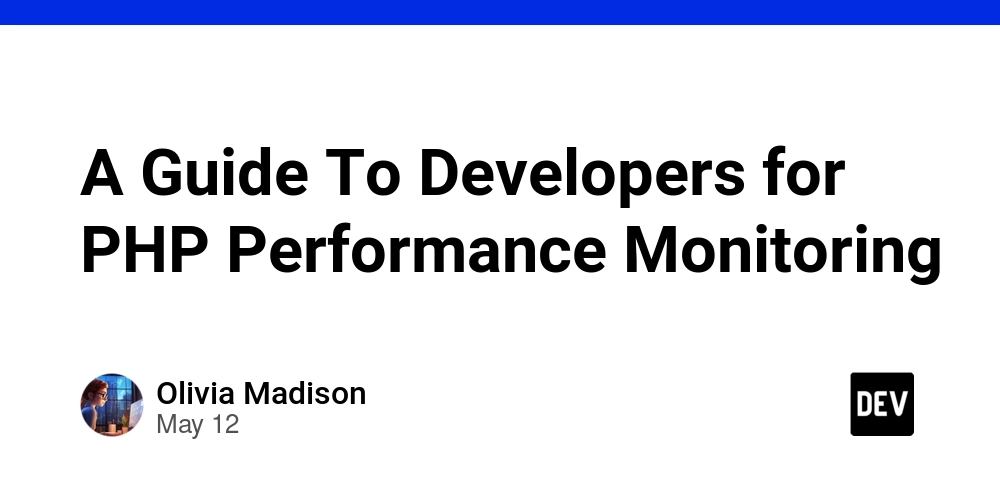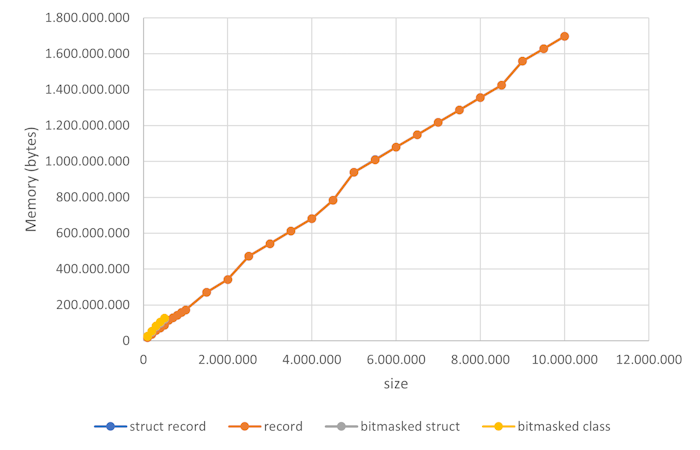A Guide To Developers for PHP Performance Monitoring
Performance is a critical aspect of any web application, especially in PHP, where speed and responsiveness significantly affect scalability and user experience. Poor performance can make scaling and maintaining a PHP application difficult. Therefore, it’s essential to identify errors and bottlenecks early using PHP performance monitoring tools. Why is PHP Monitoring Necessary? PHP development involves numerous stages, including load testing, performance optimization, and user experience design. Without monitoring, it becomes challenging to execute these effectively. Application Performance Monitoring (APM) tools help developers gain a holistic view of an application's health. They detect performance bottlenecks, measure runtime efficiency, and identify errors in code, helping ensure a seamless end-user experience. Given that users typically decide within 15 seconds whether to stay on a website, performance monitoring is key to retaining engagement. PHP is highly configurable, which, while flexible, also increases the chance of misconfigurations and hidden bugs that can hinder scalability. Monitoring ensures the right configurations are used and helps maintain high application standards. Common Developer Mistakes Typical errors in PHP development include: Excessive or redundant database queries Poor server configurations Loading too many unnecessary files Misusing sleep methods in code Inefficient use of external API calls Addressing these mistakes early can prevent significant performance issues later. Key Metrics to Monitor Monitoring should focus on several key performance indicators (KPIs): Response Time **– Measures how quickly the app responds to user requests. **Apdex Score – Indicates user satisfaction with application speed (rated from 0 to 1). Exception Rate – Tracks frequency of runtime errors and exceptions. Query Time – Monitors duration of database operations to identify slow queries. SLA Report – Documents system uptime and availability for end users. HTTP Failure Rates – Measures the number of HTTP errors affecting app reliability. Why Use PHP APM Tools? PHP APM tools offer benefits such as: - No code changes needed: Easily integrate monitoring without altering your existing PHP codebase. - User-friendly interfaces: Access intuitive dashboards and clear visualizations for faster decision-making. - Responsive customer support: Get timely assistance and guidance to resolve issues without extra charges. - Cost-effective solutions: Achieve comprehensive monitoring and insights without straining your budget. Notable Features: Transaction Monitoring – Tracks critical application flows and identifies slow operations. Database Monitoring – Highlights inefficient queries and their impact. Slow Request Traces – Helps locate performance lags in the codebase. External Request Monitoring – Assesses third-party API performance. API Failures – Detects and logs all HTTP failures. Release Tracking – Monitors deployments to ensure new versions do not introduce regressions. Error Tracking – Logs exceptions with full stack traces and error origins. Conclusion PHP performance monitoring is essential for reducing development time and ensuring a smooth, scalable application. Without visibility into real-time operations, it’s impossible to address failures proactively. An effective APM tool allows developers to monitor, alert, and resolve issues efficiently, improving user satisfaction and system stability over time.

Performance is a critical aspect of any web application, especially in PHP, where speed and responsiveness significantly affect scalability and user experience. Poor performance can make scaling and maintaining a PHP application difficult. Therefore, it’s essential to identify errors and bottlenecks early using PHP performance monitoring tools.
Why is PHP Monitoring Necessary?
PHP development involves numerous stages, including load testing, performance optimization, and user experience design. Without monitoring, it becomes challenging to execute these effectively. Application Performance Monitoring (APM) tools help developers gain a holistic view of an application's health. They detect performance bottlenecks, measure runtime efficiency, and identify errors in code, helping ensure a seamless end-user experience. Given that users typically decide within 15 seconds whether to stay on a website, performance monitoring is key to retaining engagement.
PHP is highly configurable, which, while flexible, also increases the chance of misconfigurations and hidden bugs that can hinder scalability. Monitoring ensures the right configurations are used and helps maintain high application standards.
Common Developer Mistakes
Typical errors in PHP development include:
- Excessive or redundant database queries
- Poor server configurations
- Loading too many unnecessary files
- Misusing sleep methods in code
- Inefficient use of external API calls
- Addressing these mistakes early can prevent significant performance issues later.
Key Metrics to Monitor
Monitoring should focus on several key performance indicators (KPIs):
Response Time **– Measures how quickly the app responds to user requests.
**Apdex Score – Indicates user satisfaction with application speed (rated from 0 to 1).
Exception Rate – Tracks frequency of runtime errors and exceptions.
Query Time – Monitors duration of database operations to identify slow queries.
SLA Report – Documents system uptime and availability for end users.
HTTP Failure Rates – Measures the number of HTTP errors affecting app reliability.
Why Use PHP APM Tools?
PHP APM tools offer benefits such as:
- No code changes needed: Easily integrate monitoring without altering your existing PHP codebase.
- User-friendly interfaces: Access intuitive dashboards and clear visualizations for faster decision-making.
- Responsive customer support: Get timely assistance and guidance to resolve issues without extra charges.
- Cost-effective solutions: Achieve comprehensive monitoring and insights without straining your budget.
Notable Features:
- Transaction Monitoring – Tracks critical application flows and identifies slow operations.
- Database Monitoring – Highlights inefficient queries and their impact.
- Slow Request Traces – Helps locate performance lags in the codebase.
- External Request Monitoring – Assesses third-party API performance.
- API Failures – Detects and logs all HTTP failures.
- Release Tracking – Monitors deployments to ensure new versions do not introduce regressions.
- Error Tracking – Logs exceptions with full stack traces and error origins.
Conclusion
PHP performance monitoring is essential for reducing development time and ensuring a smooth, scalable application. Without visibility into real-time operations, it’s impossible to address failures proactively. An effective APM tool allows developers to monitor, alert, and resolve issues efficiently, improving user satisfaction and system stability over time.












































































